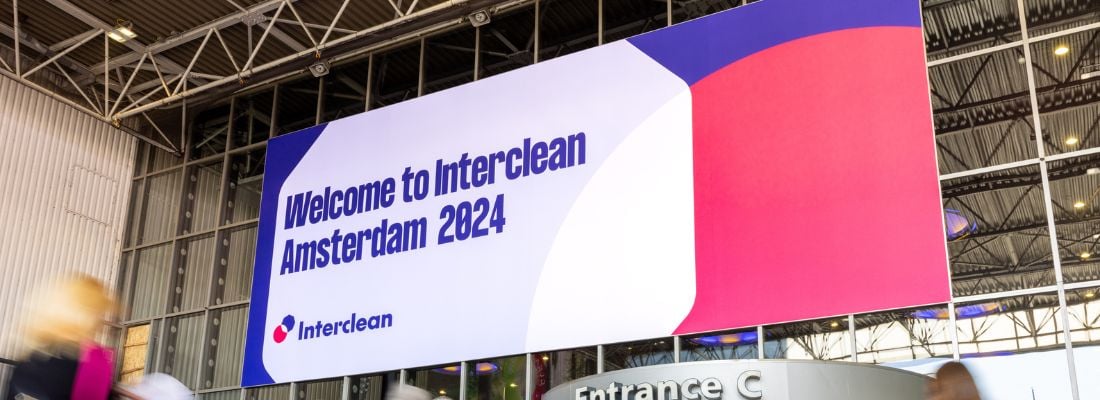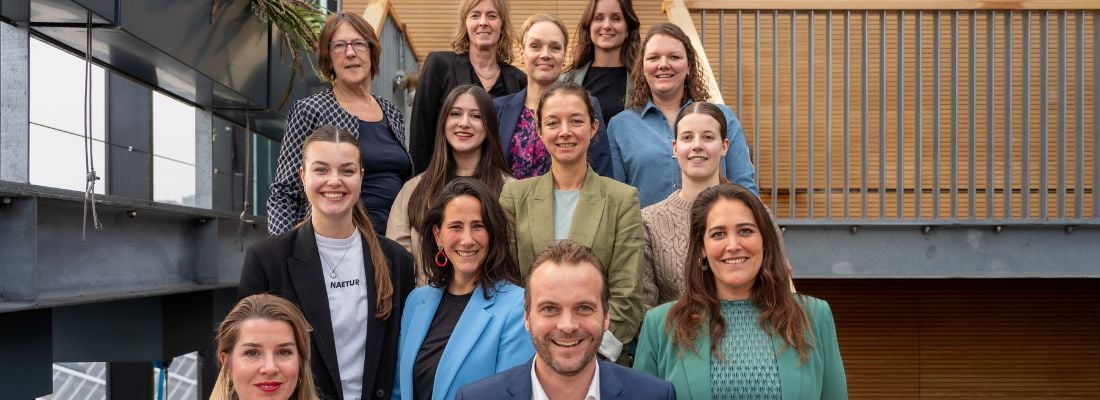Are you ready for the Future of Facility Management?
Trends such as technology, robotisation, globalisation, big data and themes such as healthy and fit living have an enormous impact on how we deal with work, workplaces and each other. It is the job of the facility manager to ensure that the environment adapts these new behavioural changes and to become the expert of workplace experiences that include the entire customer journey. In this article, we will help shape the mindset of today’s facility management by looking at trends and developments affecting the cleaning and hygiene industry.
Cleaning robots will make cleaning operatives human again
The future of cleaning lies in working smarter, not harder. Consider the effect of all those repetitive and predictable cleaning tasks on a human body. Carrying out cleaning work is physically demanding and cost a lot of energy. Cleaning operatives need to lift, carry, push and pull regularly. Various body parts are therefore used intensively and are therefore at risk of various physical complaints. It is very important for both the employer and the employee that the work can be done as safely and healthily as possible and using smart and autonomous cleaning robots is certainly a solution.
The cleaning robot market is growing in the cleaning and hygiene industry and we are now at the point where the largest suppliers of cleaning machines all have a robot, or at least are developing one. In the coming years, cleaning robots will become even smarter and more autonomous and therefore, be more and more integrated into the cleaning process.
A cleaning robot can relieve cleaning operatives from the stress and mental exhaustion of repetitive work. Cleaners can do more varied and satisfying work and have the satisfaction of seeing improvements in overall performance. It offers the cleaning operatives the opportunity to offer added value by contributing to hospitality and service provision, working on edges and corners that could use some extra attention or by taking care of the sanitary facilities down to the last detail. It is the combination of man and machine that is essential in achieving a clean result efficiently and effectively.
Another benefit is the current development of creating multifunctional cleaning machines. They will not only clean the environment autonomous, but are also able to detect unwanted visitors in the building and help secure the building. Combine these robots with a fixed lease model and it creates an opportunity to continuously improve the multiple services without making a large investment up front.
From data to safety management
People have been working from home for months and are adapting with online tools to keep productivity high. When you do something for 60 days straight it will become a habit and as a result, the norm for working in the office every day is being put to the test. A hybrid form of working, a balance between working at the office and working from home, is slowly starting to form a desirable situation for both employer and employees. As a result of which the offices will no longer be fully occupied. This means the traditional way of cleaning shifts towards data-driven cleaning.
In a previous article about smart buildings, we’ve talked about the innovative techniques that have been integrated that improve the working and living environment. The efficient design and all the smart techniques applied therein ensure that the users can not only function and perform optimally, but also adapt to the new situation to control cleaning operations with a variable occupancy of the offices. So, let’s focus on a different aspect of improving the work environment to the new hygiene standard. The impact of COVID-19 on our behaviour made it clear that creating a safer environment is more important than ever. Take public restroom for example, where it is more crucial to provide a safe and hygienic environment to a higher extent now than before COVID-19. Managing a building where everything is connected help improve services without letting the cleaning operatives work harder. The toilet, water system, mirrors and all other aspects will be connected through the Internet of Things. An algorithm will be decided based on data collected by sensors or camera’s where cleaning is necessary. At the moment there are cleaning robots being tested that cleaning washrooms based on the data-driven information.
It will also be more important to determine if people in the building are having health issues. There are some interesting innovations that can be integrated into the environment. Facility managers can place mirrors that are able to determine if you are sick or not based on facial recognition. The mirror will study the iris and skin to determine the state of your health. At the moment there is also a development going where voices are being studied to determine if someone is sick or not. Facility managers are able to build systems that manage the health of the people in the building and keep people healthy, especially in hard times
Wearables are also entering the market to improve data-driven facility management. By giving everyone a wearable, the building is able to adapt every aspect of the journey based on the person wearing it. Health can be measured; the light turns on or off and even the chair can be connected to the device. This is all part a shift where buildings are slowly being built around people.
Invest in the new way of working
Technological development provides a lot of convenience, but ultimately the professional knowledge of the craftsman or woman who works with the data or machine determines the result. Technology can take over parts of the work and have a lot of added value, but the quality always depends on the people. This is why all jobs lost in outpaced fields due to technological development are recovered by a large margin in new areas.
The future of facility management needs people who understand how to build algorithms and apply this to the cleaning protocols. Or people that are able to design robotics concept for cleaning and are capable to do the robot’s maintenance. These are all jobs with a new variety of task people can perform and are really important to develop new business models around new concepts.
Knowing this change is inevitable, the facility manager needs to start focussing on the jobs cleaning operatives will have in the upcoming years and educate these people to help them grow towards the change. We now teach generalists, but we need specialists; people that are able to keep up with the fast pace of change.
Start thinking future proof
The future of facility management begins with asking yourself: What choices do we make as leaders? How do we keep up? How can we disrupt in order to really change and build a new business model? This is why this article is not about cleaning robots or the Internet of Things, but about having the right mindset. We all know that technology will continue to play a greater role in all of our lives and that’s an inevitable development in our sector too.
The next 10 years will not be about making money, but managing uncertainties. Change will be the new normal and now is the time to start experimenting to create an environment where you embrace failure and grow towards the facility manager of the future.
Receive industry news in your inbox
The cleaning and hygiene industry is on the move and the Interclean newsletter will inform you about what is happening in the industry on a monthly basis.
Share your stories with us!
Do you have an innovation or interesting news you would like to share with the professional cleaning and hygiene industry? The Interclean website and social media channels are a great platform to showcase your stories!
Please contact our press department interclean@rai.nl.
Are you an Interclean exhibitor?
Make sure you add your latest press releases to your Company Profile in the Exhibitor Portal for free exposure.
Receive the best newsletter on cleaning & hygiene - straight to your inbox!
We promise never to send you spam and you can unsubscribe at any time!





